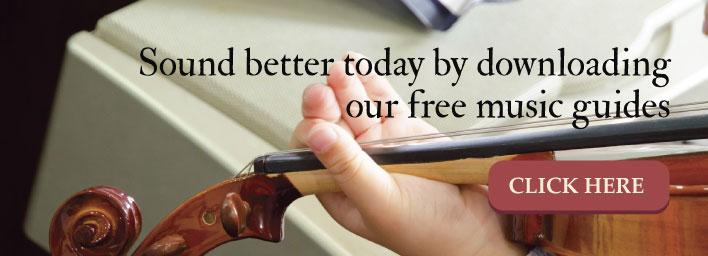Don't Forget To Breathe When Performing - Here's How

For many musicians learning the proper breathing technique is paramount. It’s crucial for singers, woodwind, and brass instrument players to learn how to breathe while performing. Although this isn’t a top priority for most string players, knowing how to breathe when playing can have a big influence on your performance. It’s very common for beginner violinists to hold their breath during certain passages or solos, but that style of playing won’t help your progress. It promotes sore muscles and high stress.
Western music uses instruments that were (in large part) developed to mimic the human voice. Therefore, the music generally reflects that fact with phrasing, which creates natural pauses. However, because phrases can be very long, woodwind and brass instrument players learn the “circular” breathing technique. Basically, this technique involves learning to breathe in through your nose while maintaining your exhaling breath for the instrument.
Fortunately, string players don’t need to train themselves that way. Yet, the physical demands of playing the instrument, whether you have a violin or a bass, requires proper breathing to perform. Maintaining fluid breathing while you play helps remove tension in your body and delivers vital oxygen to your cells, so that you can retain accuracy in your timing and execution. Just like any other athlete, it’s very important to keep breathing steadily. Use these tips to help you practice so that in a short amount of time natural breathing will become second nature.
Analyze Your Breathing Patterns
You probably know which passages and pieces give you trouble when practicing. Start with one of those pieces and pay close attention to the way you breathe while playing. Did you hold your breath during some or all of it? Don’t be alarmed. Almost every beginner violinist holds their breath at some point.
It’s normal to anticipate a tricky part and then want to hold your breath. However, that can actually make it harder for you to play because you’re denying yourself oxygen. The natural phrasing in music can help you overcome the tendency to shut off your air flow.
Understand How to Fix It
When you play, your breathing should be fluid. If you breathe naturally, it’s much harder to keep tension in your body, which is the basis for a number of playing injuries. Some musicians take their cues from singers or make it a practice to breathe out before starting to play (just before your first bow stroke). If you want to practice fluid breathing, try this:
- Instead of playing the music, hum it first.
- Notice where you take natural breaths. It will most likely follow the music’s phrasing.
- Hum the piece again to double check when you breathe.
- Now, try to play the passage by breathing in the same way.
Another method involves breathing in as you up bow and breathing out during the down bow. However, this method doesn’t work very well if you’re attempting Locatelli's Caprice in D major Op. 3 No. 23 'Il labirinto armonico'. So, it’s better to develop your breathing along with the rhythm of the piece. Try this:
- Count the beats out loud.
- Notice where you take breaths when you are counting (one-and-two-and-three-and-four).
- Slow down the tempo and try to match your breathing to the rhythm you are playing.
Also, remember to take a deep breath before you begin. This surge of oxygen can help get your muscles ready for performing.
The Alexander Technique
You may have already heard about this performance technique. Developed in the 1890s by Frederick Matthias Alexander, an actor who had extreme vocal problems, this method is designed to release and remove tension that leads to strains and injuries. Professional musicians such as Yehudi Menuhin, Paul McCartney, and Sting have publicly endorsed it, and it is taught at the Juilliard School of Performing Arts in New York, The Royal College of Music in London, and The Boston Conservatory of Music.
Instructors of this technique will teach you that everything you do when you’re performing is your personal technique and that you should learn to consciously connect your whole body as you play. This includes your breathing. You can try it like this:
- Play a scale normally with no particular focus.
- Play it again, only this time observe the way you breathe while you’re playing.
- Now reduce the tempo dramatically, and let your body breathe like it wants to, as you play the scale for a full five minutes.
Remember, bad breathing has a number of negative side effects, including tightening your airways, giving you less energy, and generating poor circulation. This can negatively influence your stamina and strength and increase your stress level. When you breathe through your nose, using your diaphragm (not your belly) and you’ll begin to see a reduction in sore muscles and an improvement in your skills.


